Porsche Cayenne E-Hybrid 2023 review: Plug-in SUV comes in fast, very fast or ridiculously fast versions
Plugging in to Porsche’s new range of hybrid Cayennes
You kind of wonder if Porsche’s product development team sit in their Stuttgart office and drum their fingers while pondering what to do with the Cayenne. On the one hand, the SUV is a phenomenal sales success for the German company, a machine which keyed into the 4×4-as-family-car zeitgeist far earlier than many of the premium opposition managed to achieve. It also essentially saved the brand from annihilation when it launched in 2002.
And on the other, it is a large and heavy, polluting vehicle that won’t easily lend itself to full electrification, given the requirements of its buyers for lots of performance, off-road ability and the capability tow big loads.
The solution to date has been to part-electrify the Cayenne, and Porsche has had a plug-in hybrid (PHEV) version of its biggest SUV on sale since 2014.
Now, as part of the current model’s midlife update, the needle is swinging very firmly to the PHEV side of the gauge when it comes to the luxury SUV’s preferred form of motive power.
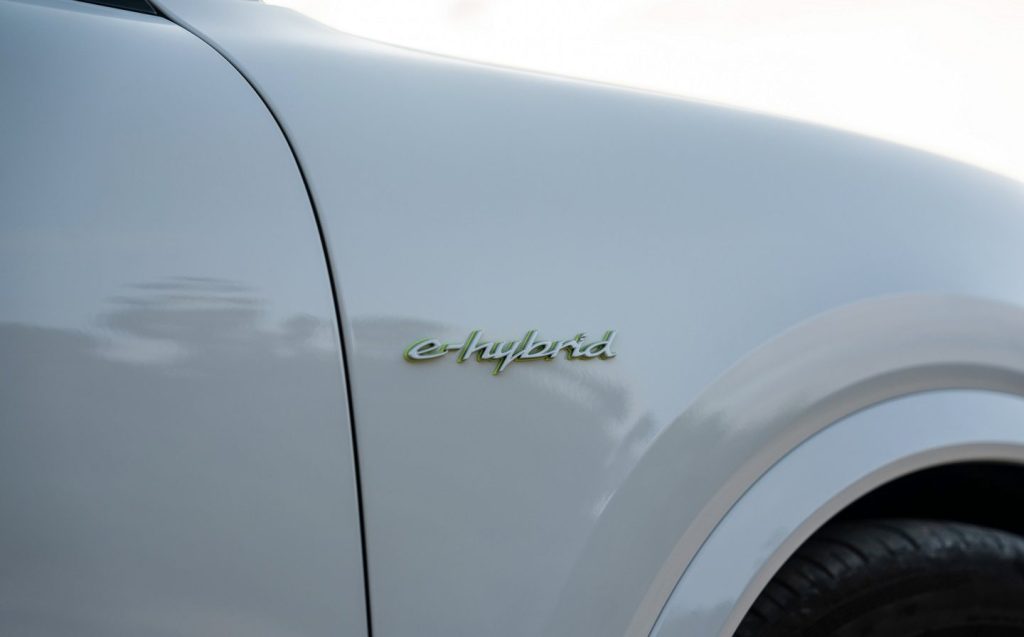
The power and the parsimony
The idea is that Porsche can continue to make the Cayenne as powerful and as fast as customers at this rarefied level of high-performance SUV demand, while simultaneously getting the fuel consumption and CO2 emissions down to socially acceptable levels.
Firstly, the visual updates for the third-gen Cayenne amount to new lamp clusters fore and aft, a fresh design of wings, a reshaped bonnet and, at the back of the SUV model, the relocation of the licence plate from the boot lid to the bumper. Nothing major.
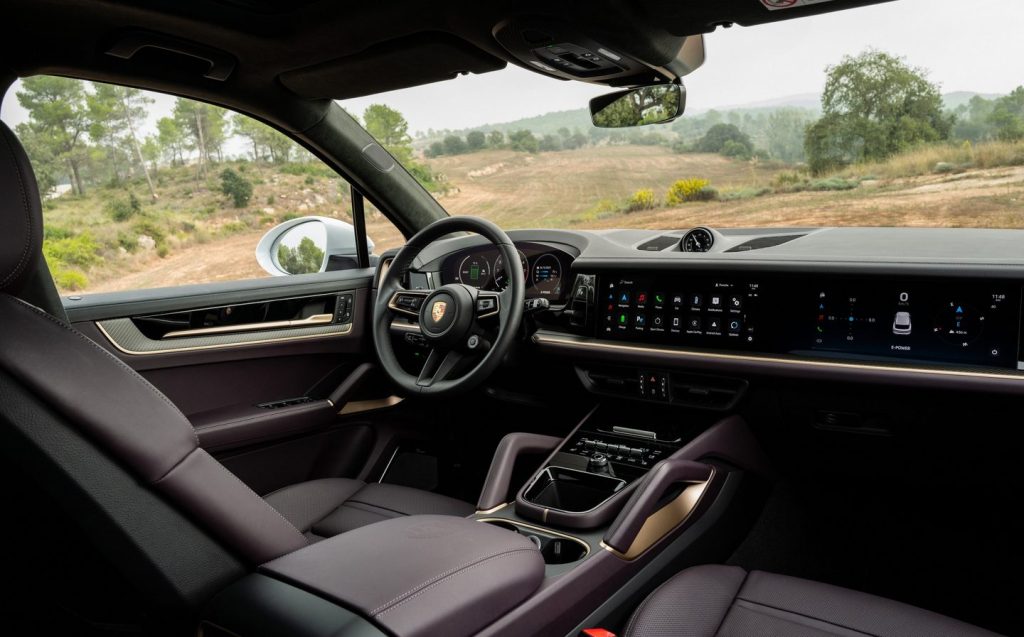
Inside, all versions get a 12.6in digital instrument cluster with no cowl, a design lifted from the Porsche Taycan, while the gear selector has shifted — if you’ll forgive the pun — from the transmission tunnel to the dashboard, just next to the steering wheel. Options include a 10.9in digital touchscreen just for the front-seat passenger, presumably so they’re not bored by the driver endlessly stressing the benefits of a PHEV during longer journeys.
There are three tiers of plug-in hybrid Cayenne to consider. The first is the plain E-Hybrid, which is the economy one, relatively speaking. Then at the top there’s a new Turbo E-Hybrid, which just so happens to be the most powerful road-going Porsche-engined production car… aside from the 918 Spyder hypercar from ten years ago. With 729bhp, it has a colossal amount of get-up-and-go.
Despite that, the most intriguing model is the one in the middle, badged S E-Hybrid.
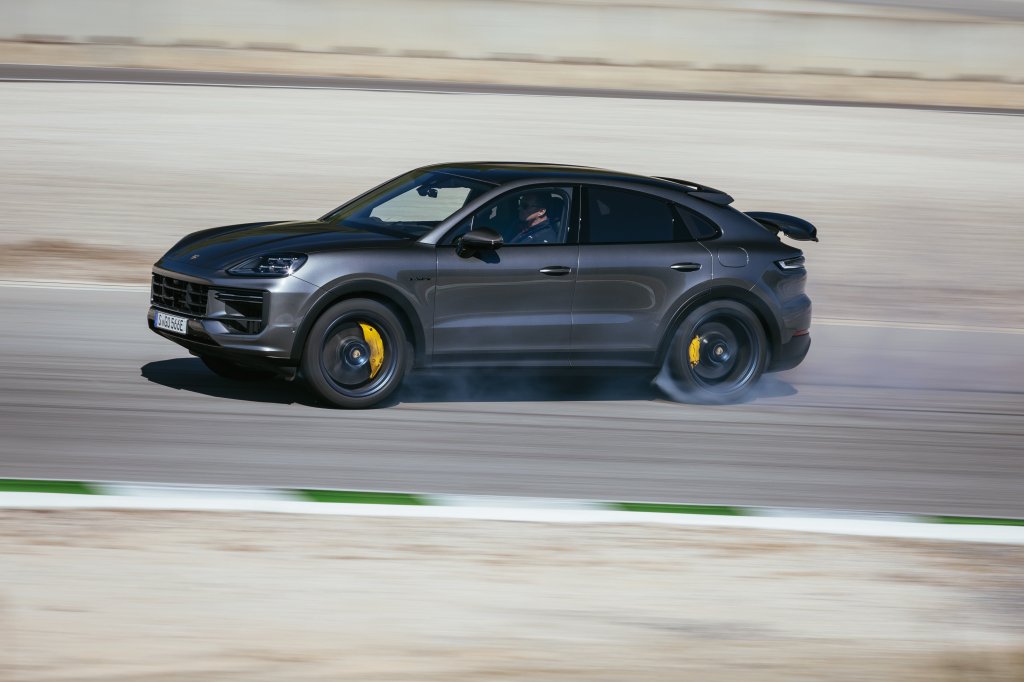
S marks the spot
This confusing whorl of the letters ‘S’, ‘E’ and ‘Hybrid’ might be hard to follow, but hopefully we can explain it succinctly. An S-model Porsche is an evolution of a specific existing version. In this case, the S E-Hybrid is a mildly uprated take on the E-Hybrid, giving you slightly more power, slightly quicker performance and, in Porsche’s usual reserved manner slightly more equipment.
It culminates in a Porsche of stark contradictions. The Cayenne S E-Hybrid will dash from 0-62mph in 4.7 seconds, but it’ll also reputedly do up to 166.2mpg — if regularly plugged into the mains, naturally. Its V6 petrol engine will run it on to 163mph in theory, but it can also whisper around in zero-emissions near-silence for up to 48 miles, thanks to the bigger 25.9kWh battery on all E-Hybrid models.
It’s practical, but pacy. It’s luxurious, but sporty. It is, in short, trying to be master of all trades and jack of none. Amazingly, it succeeds in its multifarious ambitions.
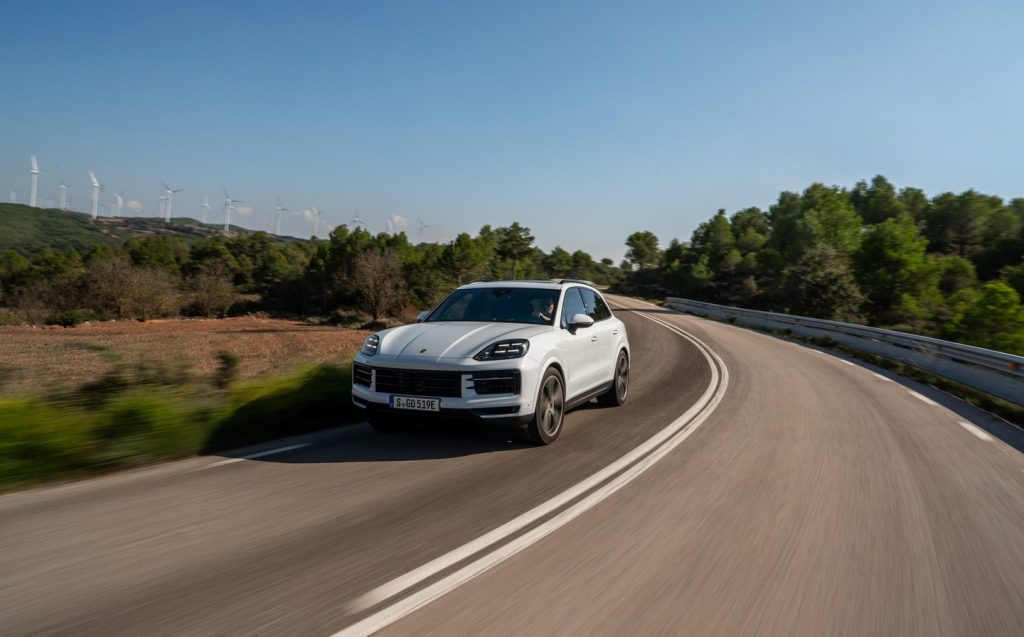
Packing in a big petrol engine, a four-wheel-drive system, an eight-speed automatic gearbox and the electrical components of a PHEV results in a heavy vehicle. Yet the Cayenne S E-Hybrid never feels that cumbersome.
Clever work on the dampers (the bits of the suspension that manage ride comfort and handling capabilities) has seen the system upgraded so that the Cayenne not only rides better than it did before, but it also goes through corners with greater confidence… and it was already pretty talented in that department to start with.
There’s an agility to the S E-Hybrid that’s totally at odds with something so tall and which weighs 2.5 tonnes. Thank Porsche’s excellent steering for some of that, of course, as it helps with making the Cayenne feel remarkably alert and eager. But it’s also evident in the way the SUV always keeps careful control of its sizeable body, which is a direct benefit of that new suspension.
Speak softly and carry a big stick
The S E-Hybrid is even more impressive when it comes to regular driving duties. It oozes around town on its powerful electric motor and the ride comfort is exceptional, considering every E-Hybrid model rolls on at least 20in alloys. You don’t even hear much of what the tyres are doing at any speed, which is commendable because they’re such socking big bits of rubber at each corner.
So, would you need the outrageous power of the Turbo E-Hybrid? Realistically, no, but that doesn’t diminish what a memorable experience it is to drive. Fully lit, a 4-litre petrol engine backed up with an electric motor makes for eye-watering acceleration, all overlaid with the bassy rumbles of Porsche’s V8.
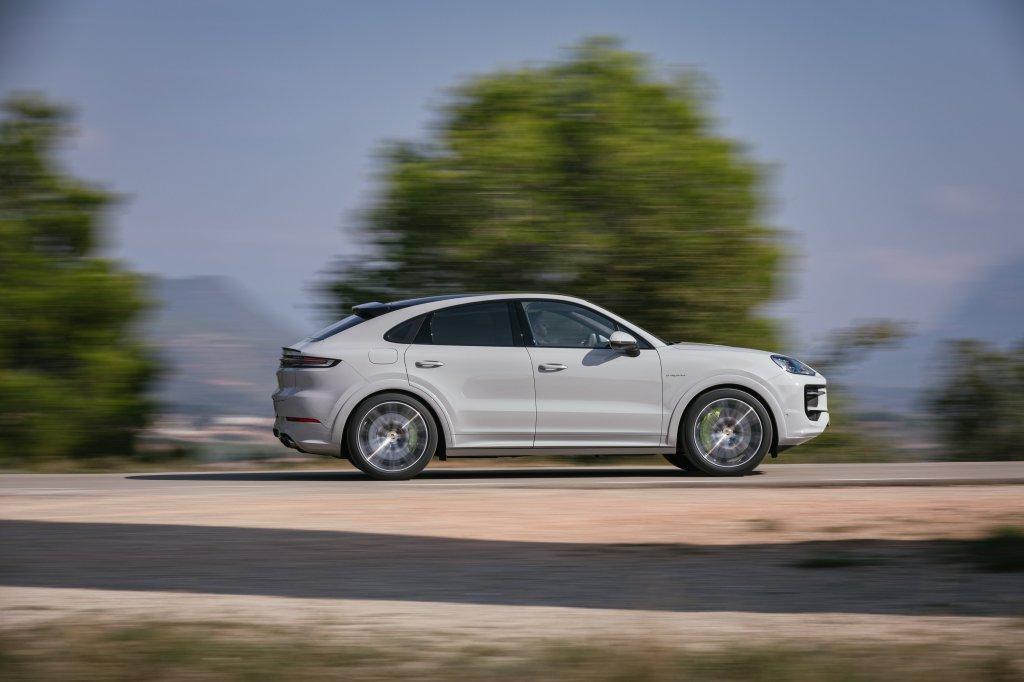
Driven on road and track, the kind of zone where the Turbo E-Hybrid makes its additional 217bhp felt over the S E-Hybrid is in the speed realm that’s wholly illegal on public roads — from 100mph onwards the acceleration in the Turbo is relentless. You know very well you’d run out of nerve and lift off the throttle in this ultimate Cayenne long before it had given up trying to headbutt the horizon. It’s insane how something so weighty — it clocks in at approaching 2.7 tonnes as a Coupé — can move with such alacrity.
It still handles brilliantly, and does the luxury around-town stuff with polished aplomb, but you’re paying so much more for the privilege when compared to the S E-Hybrid. The price gap between the Coupé version of the S E-Hybrid Cayenne and this Turbo-badged model is a whopping £42,500; switch to the more conventional-looking SUV body and that difference increases to £43,100.
Clunky name but incredible performance
There’s one more piece in the enlarged Cayenne E-Hybrid. Available as a Coupé only, there’s a £154,000 halo model for the entire PHEV line, which goes by the extraordinarily clunky name of Cayenne Turbo E-Hybrid Coupé with GT Package.
This doesn’t add any more power or torque to the Turbo E-Hybrid’s drivetrain (why would anyone need that?) but what it does do is lop 100kg off the kerb weight. This is mainly achieved by switching the panoramic glass roof of the Coupé for a carbon-fibre affair, while also fitting lighter Porsche Ceramic Composite Brakes (PCCB) behind the wheels, as well as sundry other weight-saving measures elsewhere.
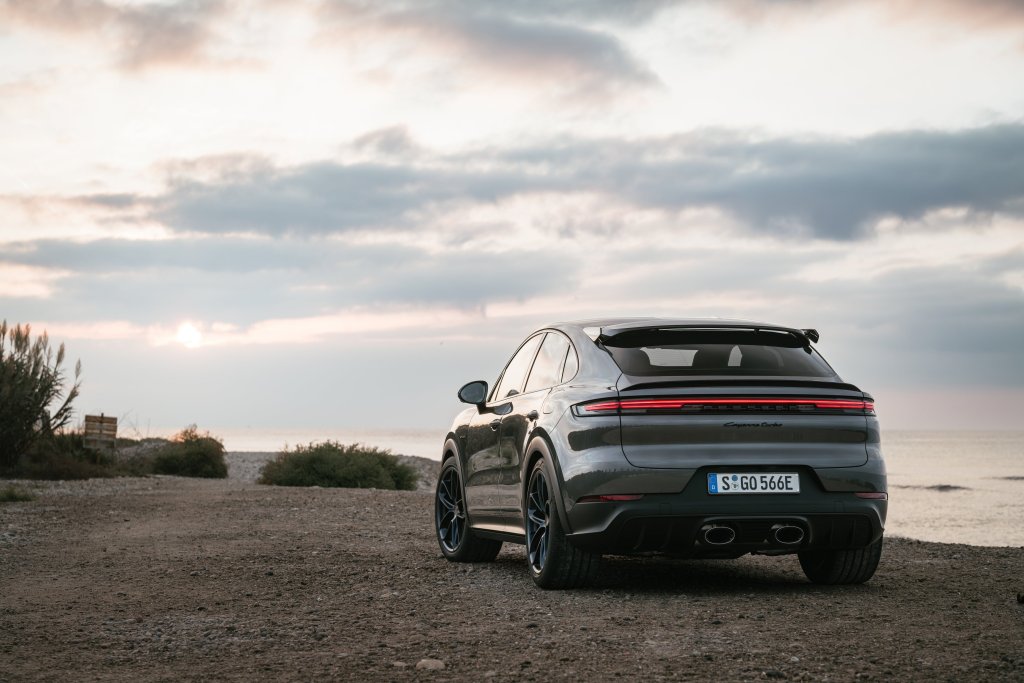
With dramatic body styling — centre-exit exhausts, additional fixed spoiler at the top of the rear windscreen, eye-catching 22in wheels and body decals that can be finished in a variety of wild colours — the Turbo E-Hybrid Coupé with GT Package is aiming to replace a very special model of the Cayenne that can no longer be sold in Europe due to emissions regulations. That model was the exquisite Cayenne Turbo GT.
The new PHEV has more power and torque than the Turbo GT, but despite the crash diet enforced on it by Porsche, it’s still getting on for being 300kg heavier. As one fellow journo said on the event, that’s like carrying an entire Ducati motorcycle around in the back of the car, all the time. The Turbo GT would run rings around it, given the chance.
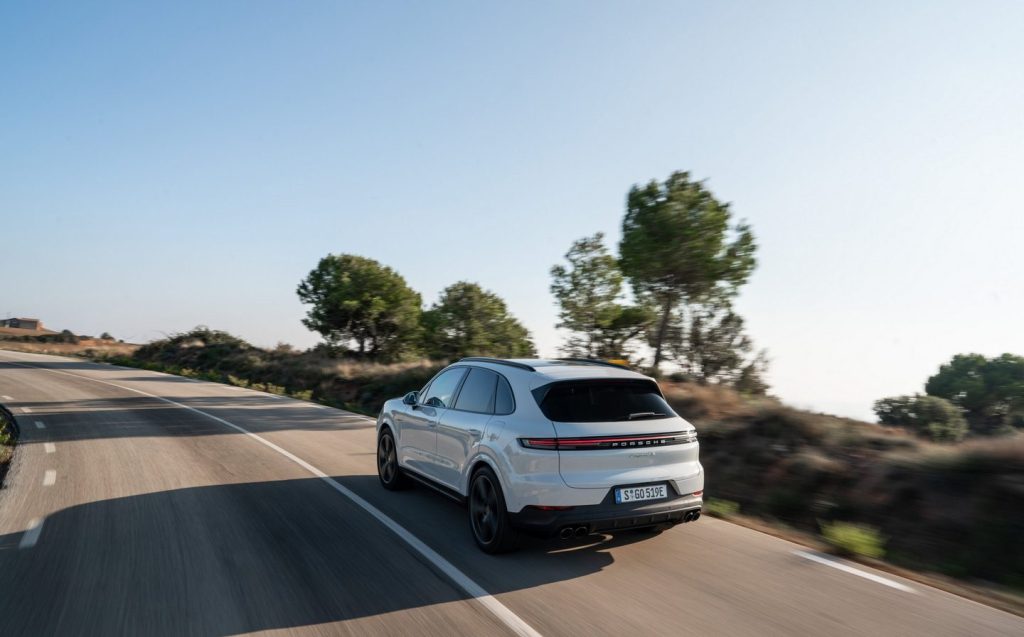
However, there’s no doubt the GT Package-equipped model is the sharpest and most enjoyable of the updated Cayenne PHEVs to drive, and by a fair distance too, but its ferocious expense and chunky mass means we can’t, in good conscience, say it’s the best of the E-Hybrid breed.
No, that honour rests with the far more sensible yet still deeply desirable Cayenne S E-Hybrid. As we said earlier on, it’s a Porsche SUV trying to be all things to all people — and it succeeds in its task, making it arguably the best high-performance SUV from any manufacturer available right now.
Seems the Cayenne isn’t such a problem child for the German company at all, then.
Related articles
- If you found our review of the new PHEV Porsche Cayennes interesting, you might be interested to read about the limited-edition Porsche 911 Dakar
- And don’t miss our review of the 718 Cayman GT4 RS
- Keen to go electric instead? Here are the top 10 longest-range electric cars
Latest articles
- testing schedule 2
- test schedule
- F1 driver Lando Norris commissions bespoke open-top Land Rover Defender
- Citroën C3 and e-C3 2024 review: Petrol or electric, bow down before the new king of value cars
- Best-selling cars 2024: The UK’s most popular models
- Fourth-generation BMW 1 Series shows its new face with all-petrol line-up for the UK
- Cupra Tavascan 2024 review: Funky electric SUV continues Spanish brand’s EV roll
- Divine intervention? Trump-supporters’ motorhome destroyed after rolling into telegraph pole
- Extended test: 2023 Vauxhall Astra Sports Tourer GS PHEV































